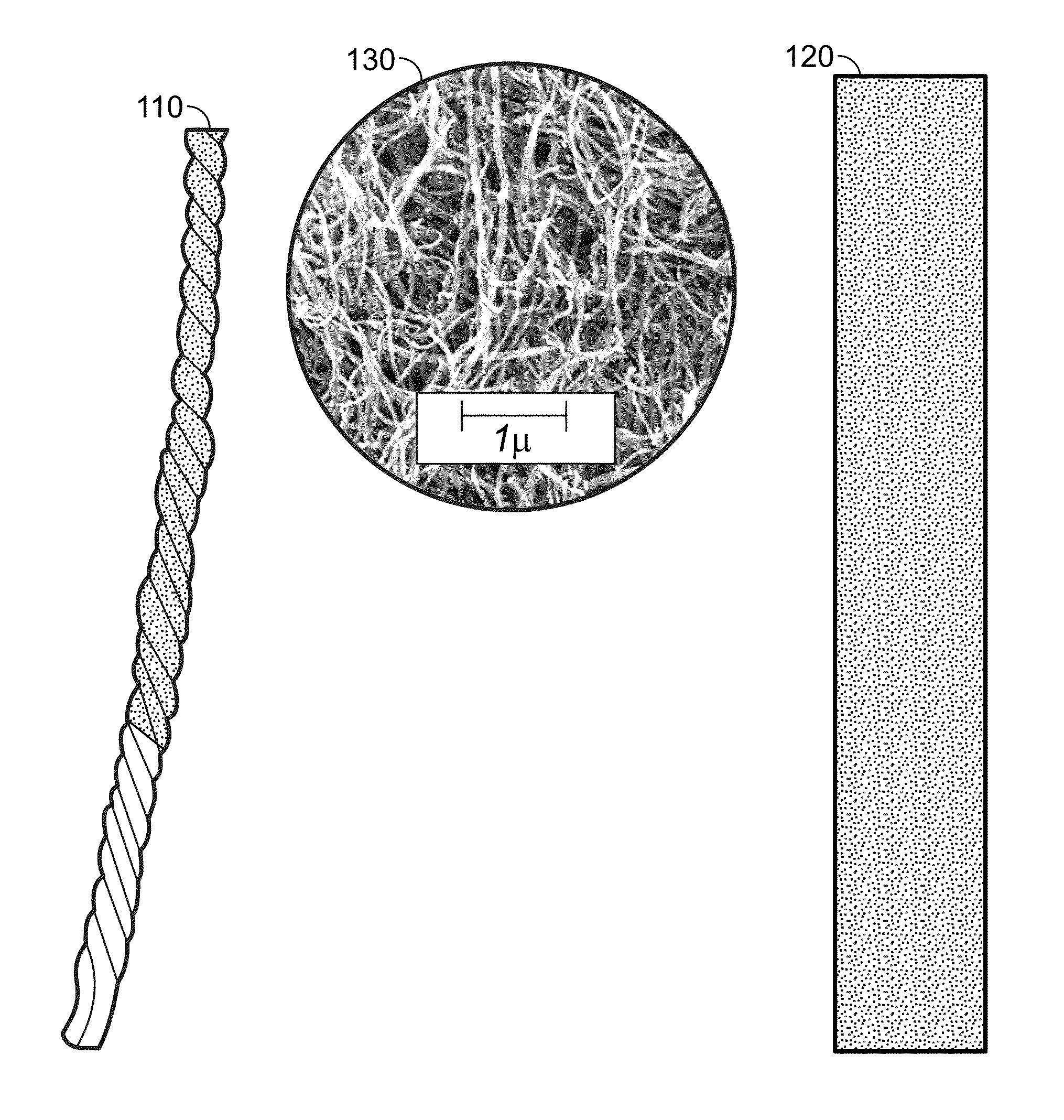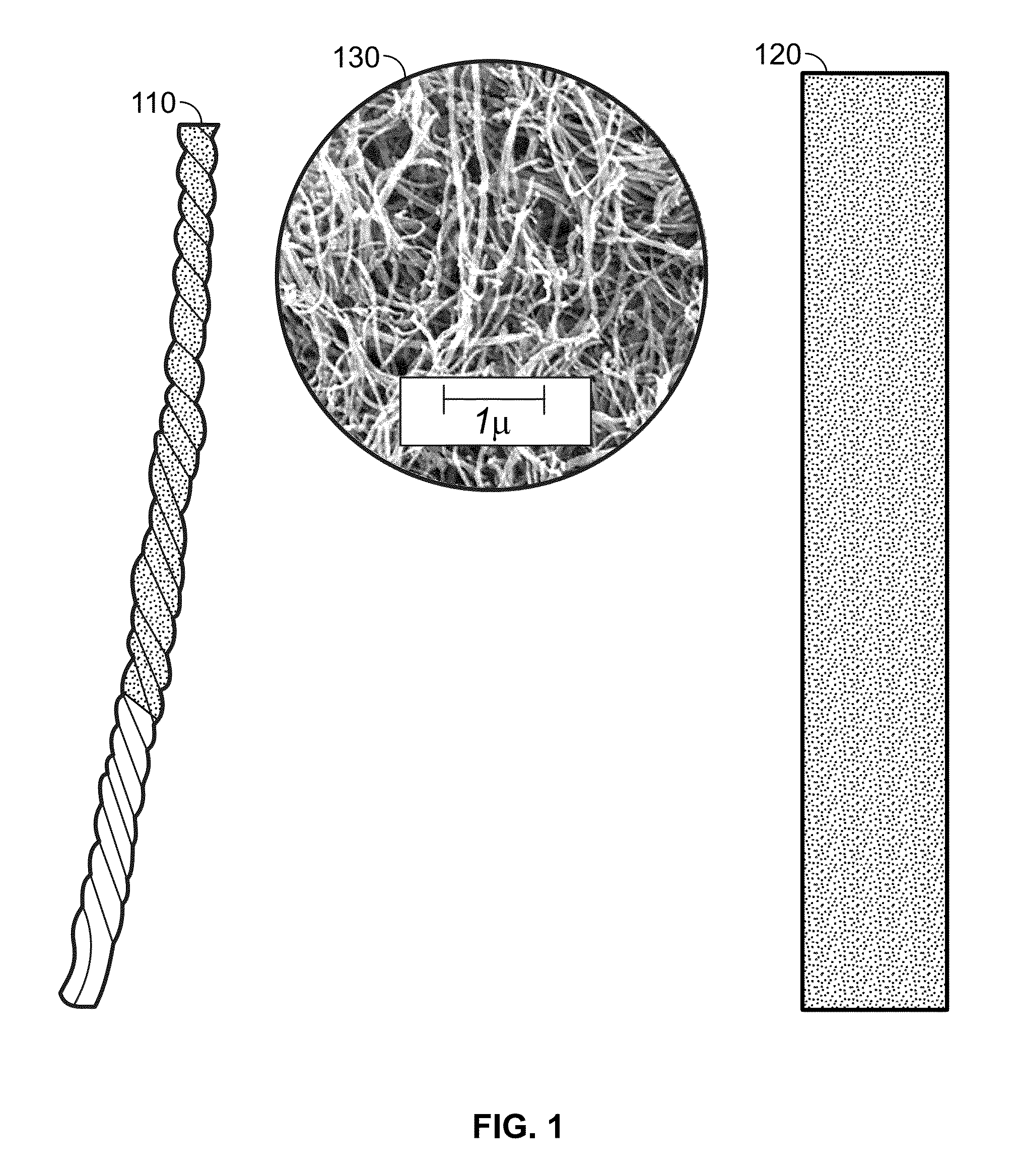Carbon nanotube conductor with enhanced electrical conductivity
a carbon nanotube and electrical conductivity technology, applied in the field of conductors, can solve the problems of significant reduction of the conductivity properties of high alternating current signal frequency, large specific surface area of cnts, and difficulty in utilizing conventional metals such as copper and silver for electrical power conductors and signal transmission cables for airborne and space system applications
- Summary
- Abstract
- Description
- Claims
- Application Information
AI Technical Summary
Benefits of technology
Problems solved by technology
Method used
Image
Examples
Embodiment Construction
[0016]While the present invention is susceptible of embodiment in many different forms, there is shown in the drawings and will herein be described in detail one or more specific embodiments, with the understanding that the present disclosure is to be considered as exemplary of the principles of the invention and not intended to limit the invention to the specific embodiments shown and described. In the following description and in the several figures of the drawings, like reference numerals are used to describe the same, similar or corresponding parts in the several views of the drawings.
[0017]Utilization of conventional metals such as copper and silver for electrical power conductors and signal transmission cables for airborne and space system applications is problematic. These applications, depending on their scale, can require hundreds to several thousand kilometers of wire and cabling and need to be lightweight in order to minimize their impact on overall system performance. Wh...
PUM
| Property | Measurement | Unit |
|---|---|---|
| density | aaaaa | aaaaa |
| densities | aaaaa | aaaaa |
| densities | aaaaa | aaaaa |
Abstract
Description
Claims
Application Information
 Login to View More
Login to View More - R&D
- Intellectual Property
- Life Sciences
- Materials
- Tech Scout
- Unparalleled Data Quality
- Higher Quality Content
- 60% Fewer Hallucinations
Browse by: Latest US Patents, China's latest patents, Technical Efficacy Thesaurus, Application Domain, Technology Topic, Popular Technical Reports.
© 2025 PatSnap. All rights reserved.Legal|Privacy policy|Modern Slavery Act Transparency Statement|Sitemap|About US| Contact US: help@patsnap.com



